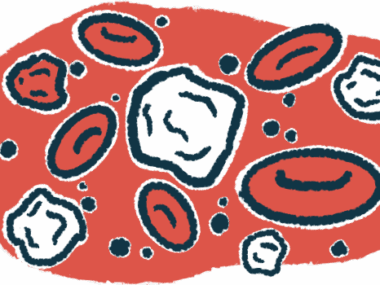Sjögren’s lung scarring linked to dry cough, shortness of breath
Distinct CT scans, shorter disease duration observed in patients with fibrosis
Written by |

Dry cough and shortness of breath were found to be significant predictors of interstitial lung disease (ILD) with scarring in patients with primary Sjögren’s syndrome in a recent study.
Patients with lung scarring, or fibrosis, also showed distinct features on CT scans and had a shorter disease duration than those with lung disease without fibrosis.
“Assessing both the chest CT presentation and clinical symptoms can help evaluate the patients with [primary Sjögren’s]-ILD and provide a basis for clinical intervention,” the researchers wrote in the study, “Pulmonary fibrosis in primary Sjögren syndrome: computed tomography, clinical features, and associated clinical factors,” which was published in Polish Archives of Internal Medicine.
Interstitial lung disease (ILD), marked by progressive tissue damage and inflammation, is fairly common in people with Sjögren’s syndrome. In many cases, it leads to scar tissue buildup, called pulmonary fibrosis, which can be particularly damaging to the lungs.
Because fibrosis is irreversible and contributes to progressive lung function decline, it’s important to understand its risk factors and clinical manifestations in Sjögren’s patients.
“Early detection and active treatment are important to improve prognosis,” wrote researchers in China who examined the clinical features of Sjögren’s-associated ILD and explored possible risk factors for fibrosis in patients with primary Sjögren’s.
Fibrosis, non-fibrosis in Sjögren’s
The analysis included 151 patients (129 women, 22 men; mean age, 53), seen at the researchers’ clinic between 2012 and 2019.
Based on CT imaging of the lungs, 48 patients were determined to have fibrosis, while the remaining 103 had non-fibrotic ILD.
Patients with fibrotic disease were more likely to be male with a shorter disease duration than those without fibrosis. That could be related to the fact that they had more severe disease, which prompted an earlier detection, the researchers noted.
Dry cough and shortness of breath appeared to be predominant symptoms in the fibrosis group. Both were significant independent risk factors for fibrosis in final statistical analyses.
Patients with fibrosis were also more likely to have fever, whereas those in the non-fibrosis group tended to have oral and eye dryness and dental cavities.
Blood tests showed those with fibrotic ILD had more white blood cells and levels of inflammatory markers, namely C3 and c-reactive proteins. They also were less likely to be positive for anti-Ro52 or anti-SSA antibodies, which are associated with autoimmune diseases like Sjögren’s.
The most common type of abnormality on CT scans was ground-glass opacity, an imaging finding often linked to lung disease and fibrosis. This was more common in those with pulmonary fibrosis, as was a number of other CT imaging abnormalities.
Patients with fibrosis were less likely to have micronodules, or small clumps of cells, typically reflecting inflammation.
A total of 69 patients were followed — 34 with fibrosis, 35 without — for a median of 11.5 months, or almost a year. Most received immunosuppressive therapy during that time.
The proportion of patients who remained stable or saw changes in CT scans were similar in both groups, with about a third of patients in each group having no change, improvement, or lung disease progression.
Not enough patients had pulmonary function tests to let them thoroughly explore the relationship between CT findings and lung function, the researchers noted.
“This study demonstrated that [primary Sjögren’s]-associated pulmonary fibrosis might have a short course and be associated with various CT manifestations,” they wrote, adding that “dry cough and shortness of breath are potential predictors of pulmonary fibrosis.”






